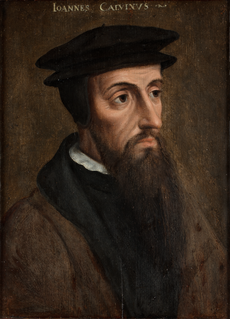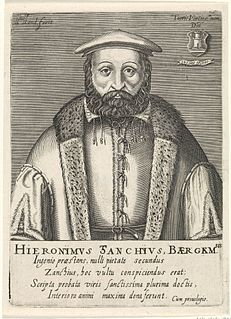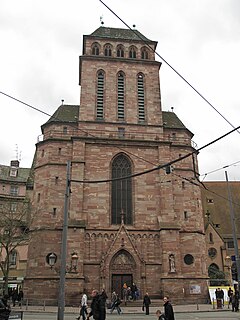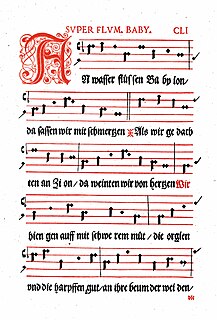This article includes a list of general references, but it lacks sufficient corresponding inline citations .(December 2012) |
Martin Schalling the Elder (died 27 February 1552 in Strasbourg) was a Protestant theologian and reformer.
This article includes a list of general references, but it lacks sufficient corresponding inline citations .(December 2012) |
Martin Schalling the Elder (died 27 February 1552 in Strasbourg) was a Protestant theologian and reformer.
Schalling was born in Ortenberg but as a friend of Martin Bucer he came to Strabsbourg. In 1537 he became a deacon in Jung-St. Peter and in 1542 he became a pastor in Wolfach. The Count of Fürstenberg summoned him to Donaueschingen. He was an annual visitor to the county's parishes alongside Caspar Hedio.
Since he had been appointed for life, he could have stayed there even after the Augsburg Interim, but before 1549 he moved back to Strasbourg. From there he led the Reformation in Weitersweiler. In 1550 he wrote the treatise De corpore et sanguine Christi in Eucharistia institutio (On Christ's body and blood in the institution of the Eucharist), for his son Martin Schalling the Younger and at the suggestion of Martin Bucer. Twenty five years later, in 1576, the text was adopted and published in Wittenberg.

Martin Bucer was a German Protestant reformer based in Strasbourg who influenced Lutheran, Calvinist, and Anglican doctrines and practices. Bucer was originally a member of the Dominican Order, but after meeting and being influenced by Martin Luther in 1518 he arranged for his monastic vows to be annulled. He then began to work for the Reformation, with the support of Franz von Sickingen.

Wolfgang Fabricius Capito was a German Protestant reformer in the Calvinist tradition.

The Helvetic Confessions are two documents expressing the common belief of the Calvinist churches of Switzerland.
Ambrosius Blarer was an influential Protestant reformer in southern Germany and north-eastern Switzerland.

Girolamo Zanchi was an Italian Protestant Reformation clergyman and educator who influenced the development of Reformed theology during the years following John Calvin's death.
Francisco de Enzinas, also known by the humanist name Francis Dryander, was a classical scholar, translator, author, Protestant reformer and apologist of Spanish origin.

Paul Fagius was a Renaissance scholar of Biblical Hebrew and Protestant reformer.
The Tetrapolitan Confession, also called the Strasbourg Confession or Swabian Confession, was an early Protestant confession of faith drawn up by Martin Bucer and Wolfgang Capito and presented to the Emperor Charles V at the Diet of Augsburg on 9 July 1530 on behalf of the four south German cities of Konstanz, Lindau, Memmingen and Strasbourg. The confession was based on an early draft of the Augsburg Confession to which Bucer and Capito had secretly obtained access, but amended in the direction of Zwinglianism. Its purpose was to prevent a schism within Protestantism. It is the oldest confession of the Reformed tradition produced in Germany.
Saint Aurelia of Strasbourg was a 4th-century saint, whose tomb in Strasbourg became the centre of a popular cult in the Middle Ages.

The Heidelberg Disputation was held at the lecture hall of the Augustinian order on April 26, 1518. It was here that Martin Luther, as a delegate for his order, began to have occasion to articulate his views. In the defense of his theses, which culminated in a contrast between divine love and human love, Luther defended the doctrine of human depravity and the bondage of the will. Martin Bucer, the reformer of Strasbourg, heard Luther here and became an avid follower. This disputation also led to Johann Eck's challenging Martin Luther to the Leipzig Debate.

Matthäus Zell was a Lutheran pastor and an early Protestant reformer based in Strasbourg. He joined the Reformation as early as 1521.

Caspar Hedio, also written as Kaspar Hedio, Kaspar Heyd, Kaspar Bock or Kaspar Böckel was a German historian, theologian and Protestant reformer.
Martin Borrhaus was a German Protestant theologian and reformer.

Simon Sulzer was a Reformed theologian, Reformer, and Antistes of the Basel church.

Johann Marbach was a German Lutheran reformer and controversialist.

Konrad Hubert, also Konrad Huber, Konrad Huober, or Konrad Humbert, was a German Reformed theologian, hymn writer and reformer. He was for 18 years the assistant of Martin Bucer at St. Thomas, Strasbourg.
Martin Schalling the Younger was a Protestant theologian, reformer and hymnwriter. He was the son of Martin Schalling the Elder.

The Church of Old Saint Peters is a by simultaneum Catholic and Lutheran church building in Strasbourg, Alsace is first mentioned in 1130.

The Church of Saint Aurelia, situated in the west of Strasbourg near the railway station, is one of the Strasbourg churches with the longest history. A Lutheran church since the Reformation, the church is of particular historical and architectural interest.

"An Wasserflüssen Babylon" is a Lutheran hymn by Wolfgang Dachstein, which was first published in Strasbourg in 1525. The text of the hymn is a paraphrase of Psalm 137. Its singing tune, which is the best known part of the hymn and Dachstein's best known melody, was popularised as chorale tune of Paul Gerhardt's 17th-century Passion hymn "Ein Lämmlein geht und trägt die Schuld". With this hymn text, Dachstein's tune is included in the Protestant hymnal Evangelisches Gesangbuch.